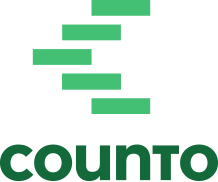Mastering Payroll Management: A Guide for Employers in Singapore
Effective payroll management is crucial for business owners in Singapore to ensure compliance with labour laws and maintain a smooth employee-employer relationship. In this comprehensive guide, we’ll delve into the intricacies of managing payroll in Singapore, covering essential aspects to help you streamline your payroll processes and avoid legal pitfalls.
Understanding Salary and Its Components
Definition of Salary: Salary encompasses the remuneration paid by employers to their employees as stipulated in their employment contracts. This includes various allowances but excludes employer’s provident fund contributions, employee on-the-job expenses, travel allowances, and retirement benefits.
Frequency of Salary Disbursement: In accordance with the Employment Act, Singapore employers must pay salaries at least once a month. Permanent employees must be paid within 7 days after the end of the pay cycle, while overtime wages should be settled within 14 days.
Payment of Salary: Employers can rely on outsourced payroll services in Singapore to generate itemised payslips and facilitate salary deposits into employees’ registered bank accounts.
Components of Itemised Payslips
Singapore companies are mandated to provide detailed and itemised payslips to their employees. These payslips should contain specific information as outlined by Singapore’s Employment Act including:
- Full name of the employer
- Full name of the employee
- Date of payment (or dates if consolidating multiple payments)
- Basic salary, which should specify:
- The basic pay rate
- Total hours, days worked, or pieces produced
- Start and end date of the salary period
- Allowances paid during the salary period, including fixed and ad-hoc allowances
- Any additional payments made during the salary period, such as bonuses, rest day pay, or public holiday pay
- Deductions for the salary period, covering statutory and ad-hoc deductions
- Overtime hours worked
- Overtime pay
- Start and end date of the overtime payroll processing
- Net total salary paid
Maintaining Payroll Records
Singapore law dictates that employers must retain and maintain payslip records (in either hard or soft copy).
- At least two years for current employees.
- One year after employee has left the employment.
Statutory Payroll Contributions in Singapore
Employers in Singapore are required to make mandatory contributions to benefit their employees, including:
- Central Provident Fund (CPF): CPF is a mandatory social security savings scheme funded by contributions from employers and employees (applies to Singaporean citizens or permanent residents only).
- Self-help groups (SHG): These are optional contributions made by employees to support underprivileged and low-income households within their respective communities. There are four SHG funds in place:
- Chinese Development Assistance Council Fund (CDAC)
- Eurasian Community Fund (ECF)
- Mosque Building and Mendaki Fund (MBMF)
- Singapore Indian Development Association Fund (SINDA)
- Skill Development Levy (SDL): The SDL is a mandatory levy that you have to pay for all your employees, including foreign employees, working in Singapore. This supports training upgrading programs.
- Foreign Workers Levy: Only applicable to foreign workers with a Work Permit or S Pass Holders.
Optional Salary Payments
Employers have the option to provide 13th-month Annual Wage Supplements, bonuses, and variable pay to employees. While not compulsory, these payments must be honoured if mentioned in the employment contract or union agreement.
Furnishing of IR8A and IR21 Income Tax Forms
Employers in Singapore must prepare and file Form IR8A and associated appendices or Form IR8S, where applicable.
1. Purpose of IR8A form
An IR8A form is a crucial annual submission that all employers in Singapore must provide to the Inland Revenue Authority of Singapore (IRAS). This document serves to report the income and earnings of each individual employee within your company.serves as a declaration of the remuneration of all your employees.
In addition to the IR8A form, there are supplementary forms that may be necessary for submission, namely, Appendix 8A, Appendix 8B, and Form IR8S, as applicable to your specific circumstances.
- Appendix 8A: This form should be completed for employees who receive benefits in kind. These non-monetary perks encompass a wide range of offerings such as accommodation provided to the employee, related benefits associated with their housing, hotel accommodation, and other items like car benefits, insurance premiums, and educational expenses, among others.
- Appendix 8B:If employees have gained profits from Employee Stock Option (ESOP) Plans or other Employee Share Ownership (ESOW) Plans, then Appendix 8B should be completed. These gains or profits from shares purchased through such plans are subject to taxation.
- Form IR8S: This form becomes relevant if you have made excess CPF contributions on your employee’s wages or if you have claimed or intend to claim a refund on excess CPF contributions.
2. Who Requires IR8A Forms?
IR8A forms must be submitted for various categories of employees, including:
- Full-time resident employees
- Part-time resident employees
- Non-resident employees
- Resident company directors
- Non-resident company directors
- Board members receiving Board Member Fees or Committee Member Fees
- Employees working while receiving their pension
- Employees who have left the company but are owed income from the previous year
3. Submission of Form IR8A
You can conveniently submit the IR8A electronically through the Auto-Inclusion Scheme (AIS) for Employment Income on the IRAS website. Participation in AIS is mandatory for employers with five or more employees.
Preparation and Filing of Monthly CPF Contributions
Central Provident Fund (CPF) contributions are mandatory for eligible employees. Employers are required to calculate and remit CPF contributions on a monthly basis. Failure to comply can lead to interest charges, fines, and imprisonment.
Providing Payroll Reports
Employers must maintain proper payroll systems to generate itemised payslips, submit CPF contributions, make tax filings, and process salary payments efficiently. Automation through payroll software can streamline these processes, reducing errors.
Leave Management
Employees covered by the Employment Act are entitled to various types of leaves and reimbursements. Employers must be aware of leave eligibility and entitlement criteria, calculate leaves, and claim reimbursements accurately. Examples include:
Paid holidays: There are 11 official public holidays each year.
Annual leave: Depending on their tenure with the company, employees are entitled to 7-14 days of paid annual leave.
Sick leave: Employees are eligible for 5-14 days of paid outpatient sick leave and 15-60 days of paid hospitalisation sick leave, based on their length of service.
Maternity leave: Eligible working mothers are entitled to 16 weeks of paid maternity leave.
Paternity leave: Eligible working fathers are entitled to 2 weeks of paid maternity leave.
Marriage leave: Typically three days of paid leave per year.
Compassionate leave: Typically two to three days of paid leave per year.
Common Payroll Questions in Singapore
1. Am I legally required to pay overtime?
Employers must pay overtime to non-workmen earning up to SGD 2,600 or workmen earning up to SGD 4,500. Overtime rates should be at least 1.5 times the hourly pay rate.
2. What am I allowed to deduct from an employee’s salary?
Deductions are permitted for absence from work, damage or loss of money or goods, and supplying accepted accommodation or amenities. Specific rules apply to deductions for salary advances, loans, overpaid salary, and unearned employment benefits.
3. Do I have to give employees payslips, and what information is required on payslips?
Employers must issue itemised payslips to employees, either in soft or hard copy, alongside payment or within three working days. Payslips should contain specific information as outlined by Singapore’s Employment Act.
4. I’m a partner / sole proprietor of a firm. Do I Need To Contribute to My Own CPF too?
If you are a partner or sole proprietor of a firm in Singapore, your need to contribute to your own CPF (Central Provident Fund) depends on your employment status and your annual Net Trade Income (NTI).
- Partner Employed Under a Contract of Service: If you are a partner and you are employed under a contract of service with your firm, you are eligible to receive CPF contributions from the firm as an employee.
- Self-Employed Partner or Sole Proprietor: If you are considered self-employed (SEP) or a sole proprietor, you cannot receive CPF contributions from the firm as an employee. Instead, you are responsible for your own CPF contributions.
- MediSave Contributions: Regardless of your status, if you earn an annual Net Trade Income (NTI) of more than SGD $6,000, you are required to contribute to your MediSave account annually. NTI is calculated as your gross trade income minus all allowable business expenses, capital allowances, and trade losses as determined by IRAS. It’s important to note that SEP individuals with an annual NTI exceeding $6,000 are subject to compulsory MediSave contributions, even if they are not eligible for CPF contributions from their firm as employees.
5. If my employee is seconded from the holding company to the subsidiary company, which entity is responsible for CPF contributions?
The employer who had entered into an employment contract with the employee is required to pay the CPF contributions.
6. Is it possible to manage my business’s payroll independently?
Thanks to modern payroll software, handling payroll on your own is absolutely possible. However, there are some potential downsides to consider:
- It can be time-consuming, particularly if you have numerous employees.
- A lack of integrated systems, such as HR or time tracking, can further extend the process and increase the likelihood of errors.
Outsourcing payroll to a professional payroll processing company could free up a significant amount of time that you can redirect to other aspects of your business.
Do you need payroll outsourced?
You should consider a specialist payroll provider if:
- You want to spend less time thinking about payroll
- You don’t want to incur the costs from handling payroll in-house
- You have manual or complicated payment workflows that you’d like to automate
- Using a payroll software on its own has become time-consuming, especially when you have a growing workforce
Try Counto’s full service payroll services
Here’s an article you might find helpful:







